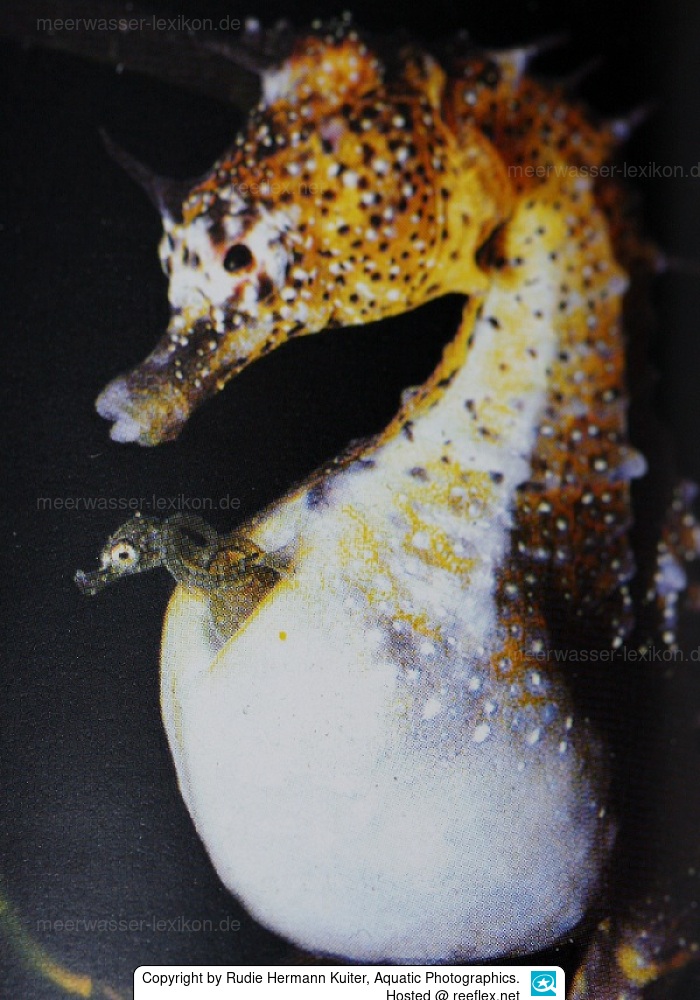Info
Special thanks for the picture to Rudie H. Kuiter, Australia.
Distribution
Indo-Pacific: endemic to south west Australia.
Biology
Adults inhabit inshore waters. Occur in small to large aggregations in weed patches attached to rocks on sand, mostly in Sargassum weeds. Ovoviviparous.
The male carries the eggs in a brood pouch which is found under the tail.
Synonym:
Hippocampus tuberculatus Castelnau, 1875
Feeding intake.
The fish take a long time to eat at the beginning, before the food is taken up, a close inspection is carried out. After acclimatisation, the offered frozen food is eaten without problems. It should be noted that wild-caught fish behave differently than offspring when it comes to food intake. In the case of offspring, the size of the fish purchased also plays a role in the choice of food.
You can download the minimum requirements for keeping seahorses (in accordance with EC Regulation 338/97) from the Federal Agency for Nature Conservation as a PDF here: https://meerwasser-lexikon.de/downloads/BfN_Mindestanforderung_haltung_seepferdchen_hippocampus.pdf







 Rudie Hermann Kuiter, Aquatic Photographics, Australien
Rudie Hermann Kuiter, Aquatic Photographics, Australien

























































